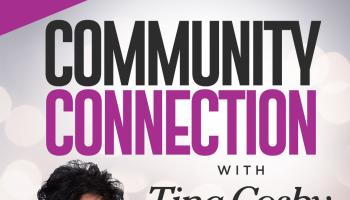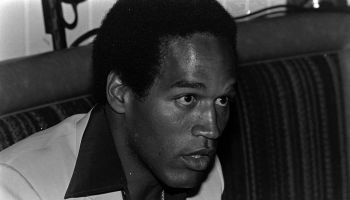We live in challenging times. Unemployment remains high, and the U.S. lead in technology and science is slipping as many foreign countries gain ground. But some U.S. cities, though slowed by the Great Recession, still thrive by lifting good old American innovation to new levels. And that will help put more Americans back to work and keep our international edge.
In Kiplinger’s latest search for top cities, we focused on places that specialize in out-of-the-box thinking. “New ideas generate new businesses,” says Kevin Stolarick, our numbers guru, who this year evaluated U.S. cities for growth and growth potential. Stolarick is research director at the Martin Prosperity Institute, a think tank that studies economic prosperity. “In the places where innovation works, it really works,” he says.
After researching and visiting our 2010 Best Cities, it became clear that the innovation factor has three elements. Mark Emmert, president of the University of Washington in Seattle, put his finger on two of them: smart people and great ideas. But we’d argue that it’s the third element — collaboration — that really supercharges a city’s economic engine. When governments, universities and business communities work together, the economic vitality is impressive.
And it’s no coincidence that economic vitality and livability go hand in hand. Creativity in music, arts and culture, plus neighborhoods and recreational facilities that rank high for “coolness,” attract like-minded professionals who go on to cultivate a region’s business scene. All of which make our 2010 Best Cities not just great places to live but also great places to start a business or find a job.
1. Austin, Tex.
Austin is arguably the the country’s best crucible for small business, offering a dozen community programs that form a neural network of business brainpower to help entrepreneurs. Now overlay that net with a dozen venture-capital funds and 20 or so business associations, plus incubators, educational opportunities and networking events. Mix all these elements in what many call a classless society, where hippie communalism coexists with no-nonsense capitalism, and you’ve got a breeding ground for start-ups.
Don’t discount the fun factor: In the self-proclaimed live-music capital of the world, music and business creativity riff off one another. The city’s famous South by Southwest festival, where concerts, independent film screenings and emerging technology overlap, is a prime example.
2. Seattle, Wash.
Rain City? We’d say Brain City. Home to a well-educated workforce, a world-class research university, über innovators Microsoft, Amazon and Boeing, and a host of risk-taking, garage-tinkering entrepreneurs, Seattle crackles with creative energy. “We only have two products here: smart people and great ideas,” says Mark Emmert, president of the University of Washington.
Seattle is revising its tax, zoning and permit policies to make them more business-friendly. Meanwhile, this sophisticated Pacific Rim city has other qualities to recommend it, including great food, a glorious setting, an outdoorsy culture, and, yes, enough rain to keep the locals’ complexions looking dewy.
3. Washington, D.C.
Every tourist knows postcard D.C., the city that is home to the White House, the Capitol and all those free Smithsonian museums. But those who live in D.C. know better. The region is chock-full of job prospects, entertainment venues and great neighborhoods, and it is booming. Eleven of the 25 richest counties in the U.S. are located in the region, which also boasts a low unemployment rate.
4. Boulder, Colo.
Boulder is a wealthy, intellectual hot spot where environmental and scientific ideas blossom into businesses. Three economic drivers power Boulder: the University of Colorado, federal research laboratories and more than 6,600 small businesses and corporations, all woven into an entrepreneurial fabric.
The city is also a mecca for those seeking healthy, active lifestyles. Outdoors enthusiasts can grab a lunch-hour workout on the city’s 150 miles of hiking and biking trails located throughout the 45,000 acres of open-space land surrounding the city.
5. Salt Lake City, Utah
You can’t beat the cost of living and doing business in Salt Lake City. Utah has relatively low wages, taxes and operating costs. Plus, it doesn’t hurt that “our offices are 15 minutes away from four ski resorts,” says one local employer.
The Salt Lake valley offers a variety of distinctive neighborhoods that boast walking-friendly centers. They provide a small-town feel within steps of the heart of the city. For those who crave a busier setting, downtown living is about to get a lot more popular.
6. Rochester, Minn.
Rochester is built on the world-renowned Mayo Clinic’s rock-solid foundation, and, in return, the community serves as great hosts and hostesses to 2.7 million visitors each year (many of them Mayo patients).
Synergy among the city’s resources has been well cultivated and is paying dividends. Take, for instance, the Minnesota Partnership for Biotechnology and Medical Genomics, formed in 2003 between Mayo and the University of Minnesota at Rochester to spawn new businesses. More than 20 technology-related firms have opened up in Rochester over the past ten years. Recognizing the depth of resources in the area, the city opened the Minnesota BioBusiness Center in spring 2009 — providing room to grow in the form of 150,000 feet of office space. The center, located a block from both the Mayo Clinic and the university, represents the city’s aspiration to build an even stronger bioscience and medical-research community. “If there’s a theme to what we’re doing here, it’s collaboration.”
7. Des Moines, Iowa
There’s more to Des Moines than agricultural jobs. A likely worker shortage sparked by retiring baby-boomers has lit a fire under Des Moines’s civic leaders. The city is working to lure back young Iowans and attracting global talent by developing its downtown and promoting the jobs available in the many industries that flourish there. Other big draws: low-cost housing, plus the city’s long-touted reputation for family-friendliness and a “19-minute commute.”
8. Burlington, Vt.
Burlington’s local-food movement perhaps best tells the story of how environmentalism drives much of the city’s economic growth. Many shops and restaurants along Burlington’s Church Street Marketplace, the famous pedestrian mall, serve up local goodies. A couple blocks over, the City Market/Onion River Co-Op, a community-owned grocery store, offers more than 1,000 Vermont products. (And atop the supermarket, generating 3% of the Co-Op’s energy needs — enough electricity to power six Burlington homes — are 136 solar panels from groSolar, another Vermont-based company.) And the crown jewel for locavores: The Intervale Center is a nonprofit organization that has managed 350 acres of family-owned farmland in Burlington since 1988 and provides 10% of the town’s food. “We’re 30 years ahead of the country with the local-food movement.”
9. West Hartford, Conn.
Community is key in West Hartford, a place where you actually know your neighbors. But this once-sleepy suburb of Connecticut’s capital is not content to be merely an idyllic place to live and raise a family (it is, by the way). West Hartford made our list because it is transforming itself from a suburb into a destination — in this case, a regional destination for shopping and dining. Small business is the new game in town, and everyone is playing.
10. Topeka, Kan.
In its reserved, midwestern way, Topeka has engineered a prosperity that most cities of similar size would envy. As the capital city of Kansas, nearly 25% of Topeka’s workforce is employed by the government, providing a stable job market where unemployment has stayed around 7%. The city boasts quality schools, friendly people, good hospitals, a university and — one of its biggest selling points — low housing costs.
according to yahoo.com















